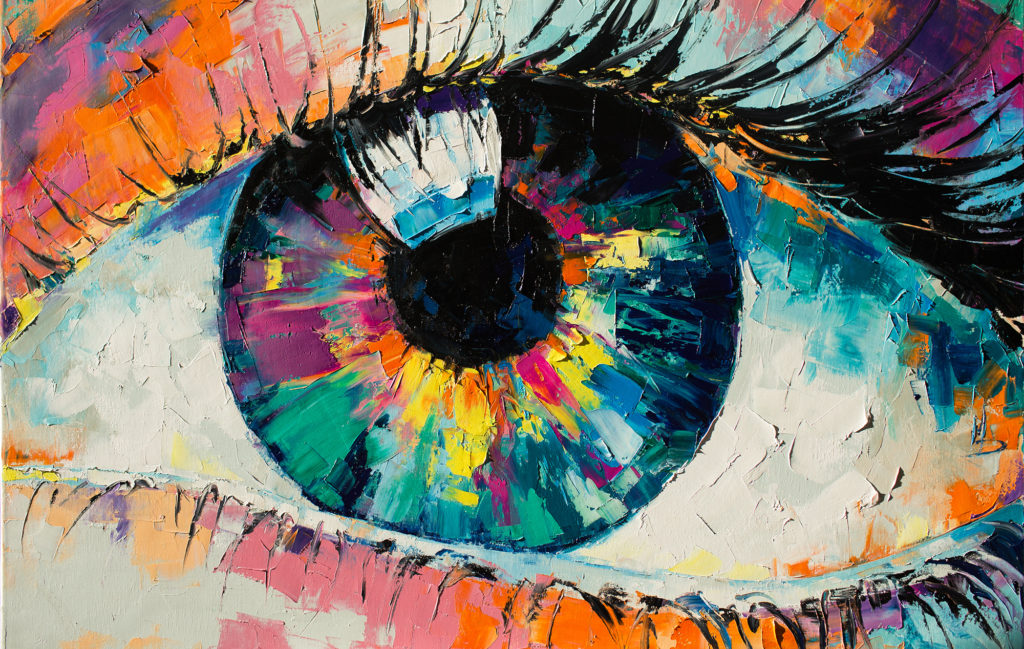The Role of Trump Art in Shaping Social Conversations Around Management
Wiki Article
Exploring the Diverse World of Artistic Expression: From Surrealism to Abstract Realistic Look
In the realm of creative expression, from the dreamlike landscapes of surrealism to the elaborate play of light and kind in abstract realistic look, artists have continually pressed the boundaries of creative thinking and creativity. Each activity holds a special lens where the world is seen and analyzed, offering a peek into the midsts of human feeling, perception, and believed. As we explore the multifaceted world of art, we exist with a tapestry of designs, strategies, and ideologies that test our understanding and prompt consideration. The journey with these varied forms of creative expression assures to unravel a rich tapestry of visual narration and intellectual query that astounds the mind and mixes the spirit.Surrealism: Releasing the Subconscious
Surrealism, a progressive creative movement of the 20th century, dug into the midsts of the subconscious, unveiling a globe of dream-like images and non-traditional juxtapositions. Pioneered by artists like Salvador Dali, René Magritte, and Joan Miró, Surrealism looked for to challenge the conventional methods of recognizing and seeing art. Through techniques such as automatism and dream analysis, Surrealist musicians aimed to touch into the subconscious mind to reveal concealed truths and desires.One of the crucial elements of Surrealism was the focus on the illogical and the uncanny. By integrating unexpected components in their works, Surrealist musicians aimed to develop a feeling of disorientation and surprise in the visitor. This disturbance of reasoning and reason was implied to prompt a much deeper expedition of the subconscious and the secrets of the human mind.
Abstract Realism: Redefining Assumption
Testing conventional imaginative limits, Abstract Realistic look redefines assumption through the combination of recognizable aspects with abstract forms. This ingenious strategy to art incorporates the representational precision of realistic look with the innovative liberty of abstraction, supplying visitors a distinct visual experience that prompts them to examine their understanding of fact.In Abstract Realism, artists make every effort to catch the essence of their topics while likewise infusing their deal with a feeling of depth and intricacy through abstract components. By mixing the acquainted with the unknown, these musicians invite audiences to involve with their pieces on multiple degrees, encouraging them to discover the nuances of kind, structure, and color.

Cubism: Fragmentising Reality
Using geometric types and fragmented point of views, Cubism reinvented the imaginative depiction of truth in the early 20th century. Developed by Pablo Picasso and Georges Braque, Cubism sought to test conventional concepts of perspective and representation. By damaging down items and numbers into geometric shapes and offering them from multiple viewpoints at the same time, Cubist musicians aimed to capture the essence of the subject rather than its literal appearance. This method not only deconstructed reality yet also stressed the monotony of the canvas, paving the way for future abstract art movements.
Cubism can be classified right into two main phases: Analytical Cubism, characterized by single shade schemes and elaborate, fragmented kinds; and Synthetic Cubism, which incorporated collection aspects and brighter shades into the compositions. With these distinctive phases, Cubism affected not only painting but likewise design, sculpture, and architecture. trump art. Its influence reverberated across the art globe, inspiring musicians to discover brand-new means of representing the world and translating around them
Expressionism: Emotions on Canvas
Discovering the midsts of human emotions via meaningful and brilliant brushstrokes, Expressionism arised as a profound artistic activity in the early 20th century. Unlike previous art activities that concentrated on illustrating the exterior world, Expressionism explored the inner world of the musician's subconscious, aiming to evoke raw feelings and prompt natural responses from audiences.
Expressionist musicians, such as Edvard Munch, Egon Schiele, and Emil Nolde, rejected conventional ideas of appeal and realistic look in support of distorting type and shade to share subjective sensations. The usage of exaggerated brushwork, vibrant colors, and distorted numbers assisted create a feeling of unease, alienation, or enthusiasm in their works.
Among the most famous examples of Expressionism is Munch's "The Scream," which captures the intense anxiety and misery of modern-day life via its swirling, distorted number against a blood-red skies. Through their psychologically billed jobs, Expressionist artists sought to test traditional artistic norms and supply a window into the unstable depths of the human spirit.
Contemporary Art: Progressing Perspectives

Among the specifying attributes of modern art is its continuous advancement and capacity to adjust to altering social landscapes. Musicians are increasingly including technology right into their technique, obscuring the lines in between the electronic and physical worlds. This fusion of tools allows for ingenious means of storytelling and engaging with target markets in a more interactive fashion.
Furthermore, modern art typically functions as a system for social discourse, attending to pushing issues such as identity, national politics, and the atmosphere. Artists are using their work to prompt and spark important conversations idea, clarifying the intricacies of the globe we stay in. As point of views remain to develop, modern art remains a dynamic and prominent pressure in shaping our social landscape.
Verdict
To conclude, the world of artistic expression encompasses a vast array of designs and movements, each with its very own one-of-a-kind strategy to sharing definition and feeling. From surrealism's expedition of the subconscious to abstract realistic look's redefining of assumption, and from cubism's fragmentation of truth to expressionism's representation of emotions, art remains to evolve and test viewpoints - navigate to this site trump art. Contemporary art reflects the ever-changing globe we live in, offering brand-new means to analyze and understand the intricacies of our realityAs we check out the multifaceted globe of art, we are presented with a tapestry of styles, strategies, and ideologies that challenge our understanding and provoke consideration. Its influence resounded across the art world, inspiring musicians to check out brand-new means of standing for the world and analyzing around them.

Report this wiki page